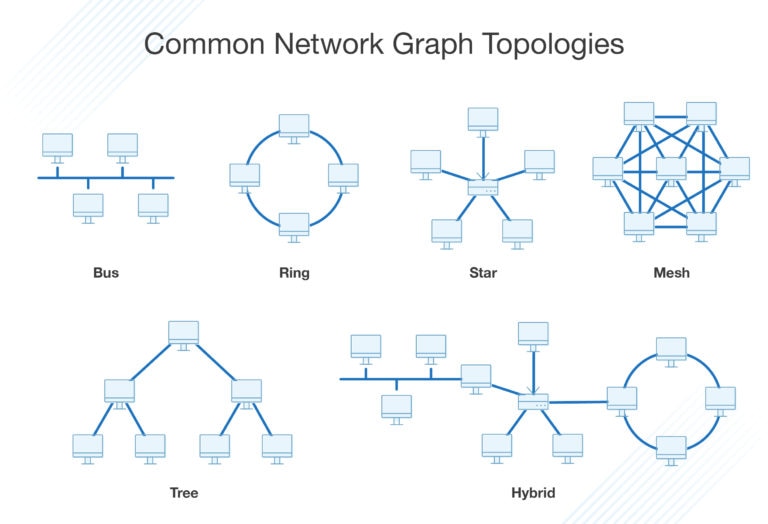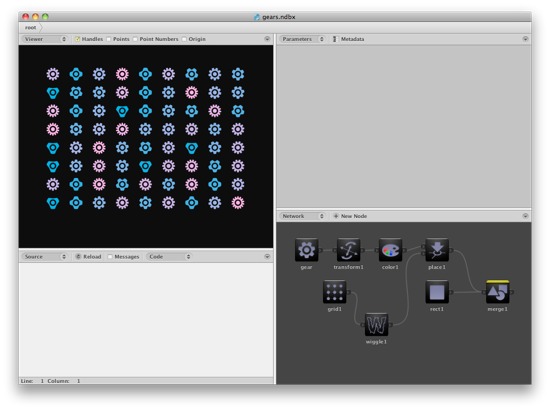

- #Nodebox network graph for mac os
- #Nodebox network graph pdf
#Nodebox network graph pdf
PDF files retain all vector information and can be manipulated in vector programs such as Adobe Illustrator or Inkscape. The export command doesn’t ask for an extension but automatically exports as a PDF file. To export the current image, choose File > Export. To import vector data use the import SVG node. To work with other programs, use the import and export functionality. These documents can be opened and saved only in NodeBox. Only in NodeBox we just save the nodes, since we can always recalculate the output of the network. NodeBox manages documents, much in the same way you work on a Photoshop document.

Click rewind to stop the animation and go back to frame 1.Click play to start the animation from the current frame.Double-click the frame number to go to a specific frame.Drag the frame number to scrub through the animation.

The animation bar controls the animation features of NodeBox. The address bar is useful when using subnetworks. The difference between the selected and rendered node is explained in the getting started tutorial. Because names in the network are unique, NodeBox will rename nodes as needed. You can copy-paste nodes in one document and between documents. You can zoom and pan the network in the same you manipulate the viewer: This allows you to see the effects of your changes as they propagate through the network. This renders the node in the viewer.Ī powerful feature of NodeBox is that you can change the port values of one node while keeping another node rendered in the viewer. To show the visual output of a node, click the node twice.To show the ports of a node, click the node once.The network pane is where you connect nodes together to make networks.

The Metadata button allows you to add your own ports to a node.
Revert to Default changes the port value back to its original value. Holding ALT and SHIFT nudge by 0.01 and 10, respectively.Įach individual port has a contextual menu: Click the arrow keys to nudge it up or down by 1. Drag the number while holding the SHIFT key to change it in increments of 10 (for big changes). Drag the number while holding the ALT key to change it in increments of 0.01 (for small changes). Drag the number to change it in increments of 1. Double-click the number to enter a new number. Ports can have different types: numbers, text, colors, menus, etc. Each node has different ports depending on its function. The port pane allows you to change the port values of the currently selected node. They allow direct manipulation of the shape, which is generally easier than dragging numbers in the parameter pane. Right-click and choose “Reset View” to reset the view back to 100% zoom. Use the scroll wheel to zoom the view in or out. In addition, it can show geometric detail such as the location of the points, their index numbers and the origin. It also shows handles for the currently selected node. The Viewer Pane shows the actual drawing. NodeBox for OpenGL version 1.7.A NodeBox document window consists of these main components: The Viewer Pane It opens the main application window with n(). It defines a draw() function and attaches it to the canvas, so that it will be drawn each animation frame. It imports the aphics module with the standard set of drawing commands. It assumes NOGL, Pyglet and Python are installed on your system. This example demonstrates a simple NOGL script. Users can work with an external editor of their own choice (we use TextMate). Using VertexArrays it is possible to achieve a decent 3D performance. NodeBox for OpenGL handles 3D (for example, in City In A Bottle) if one is willing to call OpenGL functions directly. Its implementation for graph networks is identical to that in Pattern, so users proficient in both packages can easily switch between graph analysis and graph visualization. However, motion tweening, layers, hardware-accelerated pixel effects (GLSL shaders on-the-fly), geometry & Bézier path interpolation, tesselation and simple physics algorithms have been bundled into the core. #Nodebox network graph for mac os
Unlike NodeBox for Mac OS X, it does not have an extensive repository of plug-in libraries. It is based on Pyglet (Python OpenGL toolkit) and augmented with a simple API of drawing commands, near-identical to NodeBox for Mac OS X. NodeBox for OpenGL (NOGL) is a free, cross-platform library for generating 2D animations with Python programming code.








 0 kommentar(er)
0 kommentar(er)
